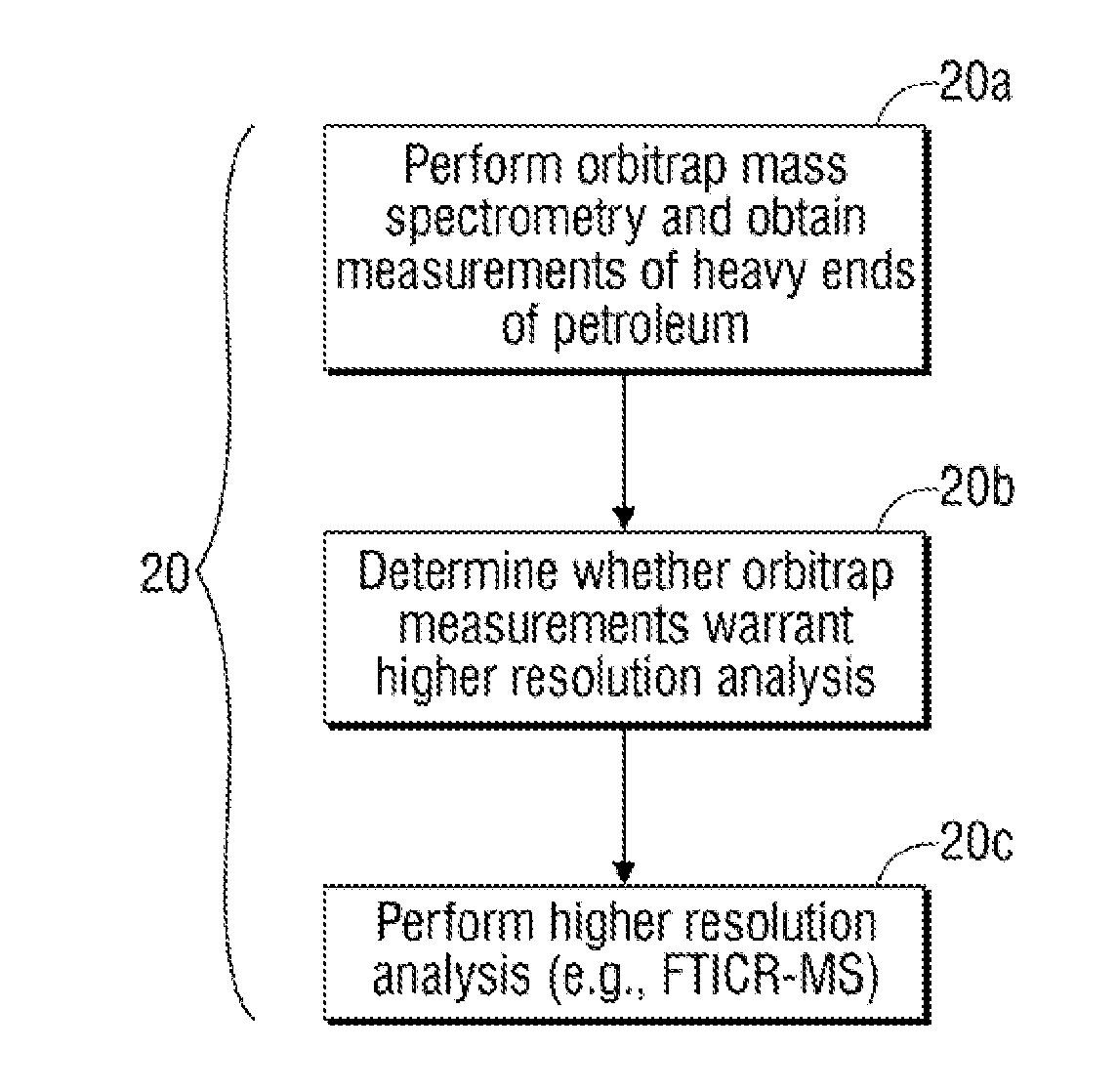Method for analysis of the chemical composition of the heavy fraction of petroleum
- Summary
- Abstract
- Description
- Claims
- Application Information
AI Technical Summary
Benefits of technology
Problems solved by technology
Method used
Image
Examples
Embodiment Construction
[0022]FIG. 1 illustrates an exemplary workflow for petroleum reservoir analysis according to the present invention, although the workflow may include only a portion of what is shown and now described, or may include additional steps.
[0023]Initially, petroleum fluid samples are collected by some means. By way of example, petroleum fluid samples may be collected by downhole fluid sampling, by core extraction, or by a combination of both such methods. Where fluid samples are collected by downhole fluid sampling, in stage 10 a downhole fluid sampling tool is deployed within a wellbore traversing a reservoir of interest and operated to extract from well-defined locations and store one or more live oil samples within the tool. The downhole fluid sampling tool is preferably a dynamical testing tool, such as the MDT tool available from Schlumberger Technology Corporation of Sugar Land, Tex., USA. Optionally, but in accord with preferred petroleum fluid collection practices, at stage 12, a d...
PUM
 Login to View More
Login to View More Abstract
Description
Claims
Application Information
 Login to View More
Login to View More - R&D
- Intellectual Property
- Life Sciences
- Materials
- Tech Scout
- Unparalleled Data Quality
- Higher Quality Content
- 60% Fewer Hallucinations
Browse by: Latest US Patents, China's latest patents, Technical Efficacy Thesaurus, Application Domain, Technology Topic, Popular Technical Reports.
© 2025 PatSnap. All rights reserved.Legal|Privacy policy|Modern Slavery Act Transparency Statement|Sitemap|About US| Contact US: help@patsnap.com



